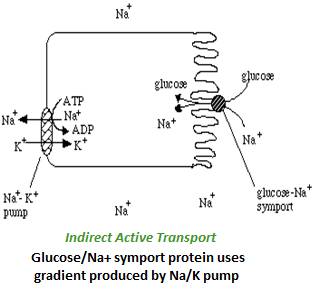The cell membrane is made mostly of a double layer of phospholipids, which envelopes the cell and separates its interior from its environment. A phospholipid molecule has a hydrophilic (water-loving) phosphate head and two hydrophobic (water-hating) fatty-acid tails. By forming a bilayer with their tails intertwining, they are able to form a separation between the watery inside and outside of the cell. At body temperature, membranes are a liquid with a consistency similar to cooking oil.
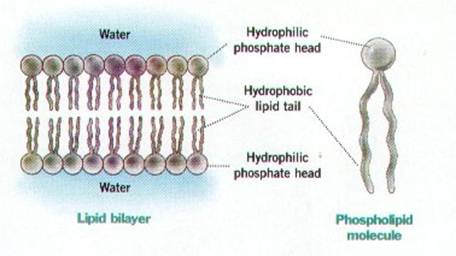
Cell Membrane
All human cells acquire the nutritional molecules and ions they need from their surrounding extracellular fluid. This is also where the cell "dumps" its waste. Thus, there is an unceasing traffic of molecules and ions in and out of the cell through the cell membrane (E.g. glucose, Na+, Ca2+), and also through its organelle membranes (E.g. proteins, mRNA, Ca2+, ATP). Typically, the cells are located in close proximity to the blood vessels, which supply nutrients and oxygen and pick up waste to and from the cells (substances are transferred by diffusion between the capillaries and the extracellular fluid).
The cell membrane serves as both a gateway and a barrier for the cell and is said to be "semi-permeable". It can either allow a molecule or ion from the extra-cellular fluid to pass through freely, pass through to a limited extent or not pass through at all, thus regulating its interaction with its environment. The cell membrane also contains cholesterol, which serves to "waterproof" the cell.
Substances can cross the cell or organelle membrane by either a passive or active transport mechanism.

By diffusion - does NOT require energy
A substance moves freely across the membrane lipid bilayer down a concentration gradient (i.e. diffuses from an area of high concentration to an area of low concentration )
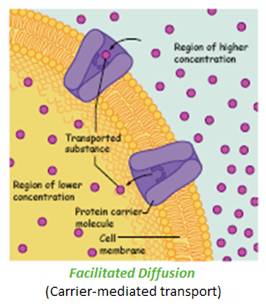
Substances are transported down an electrical or chemical concentration gradient facilitated by a carrier-protein or ion-channel spanning the membrane. Solutes, such as charged ions in solution (E.g. Na+, K+ and Cl- as solutes) require a carrier or channel to cross the membrane to avoid coming into contact with the water-hating core of the membrane lipid-bilayer. (A carrier or channel is made of protein molecules with a water hating, lipid loving exterior which "happily" spans the membrane, and a water-loving center through which water and small water soluble molecules can pass). Some substances, such as glucose, are too large to pass directly through the membrane, but are able to cross when provided a carrier large enough to accommodate them. Some molecules, such as starch and proteins, are just simply too large to cross the cell membrane.
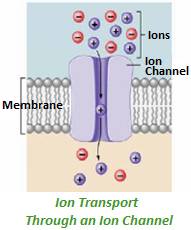
There are 4 types of gating mechanisms:
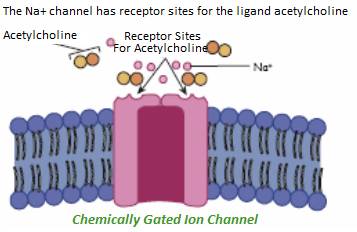
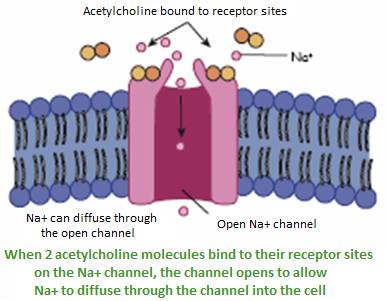
ATP energy is needed to run a "Switch-Operated" Enzyme Pump to transport through a protein channel against a gradient
When there is an electrical or chemical gradient (called an electrochemical gradient) opposing the movement of an ion or molecule across the membrane, a special transport protein pump is needed to convey the ion or molecule.
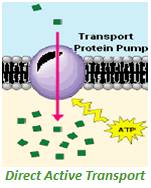
Active transport enables the cell to receive essential nutrients from the extracellular fluid - even when the nutrients are more concentrated inside the cell
The most important example of direct active transport is the sodium/potassium (Na/K) pump
The Na/K pump pumps sodium ions (Na+) out of the cell and potassium ions (K+) into the cell, across the membrane against the electrochemical forces, in order to maintain the "cell battery" voltage.
E.g. Used to transport glucose
Involves using energy to establish a gradient across the cell membrane, and then utilizing that gradient to transport a molecule against its concentration gradient. The Na+/glucose indirect active transport mechanism, in particular, uses the Na/K pump as the first step, generating a strong Na+ gradient across the cell membrane. Then the glucose/Na+ symport protein uses that Na+ gradient to transport glucose into the cell. (Symport means binding two molecules at a time and using the gradient of one solute's concentration to force the other molecule against its gradient).
